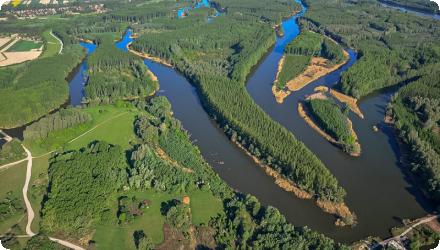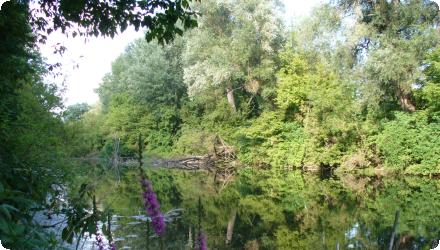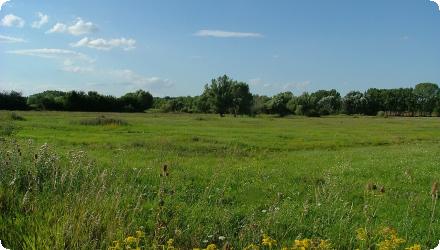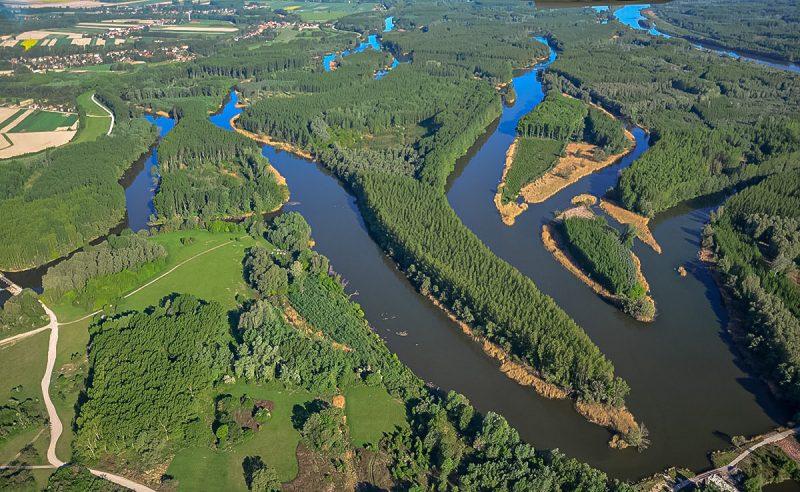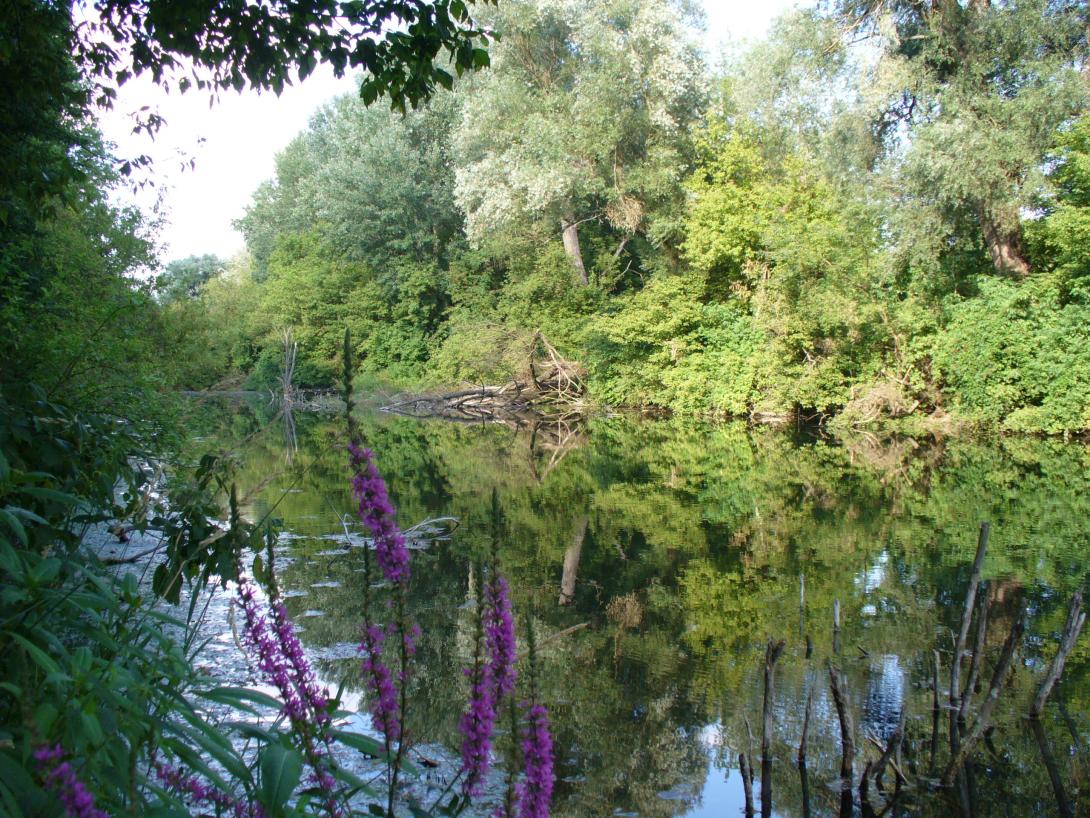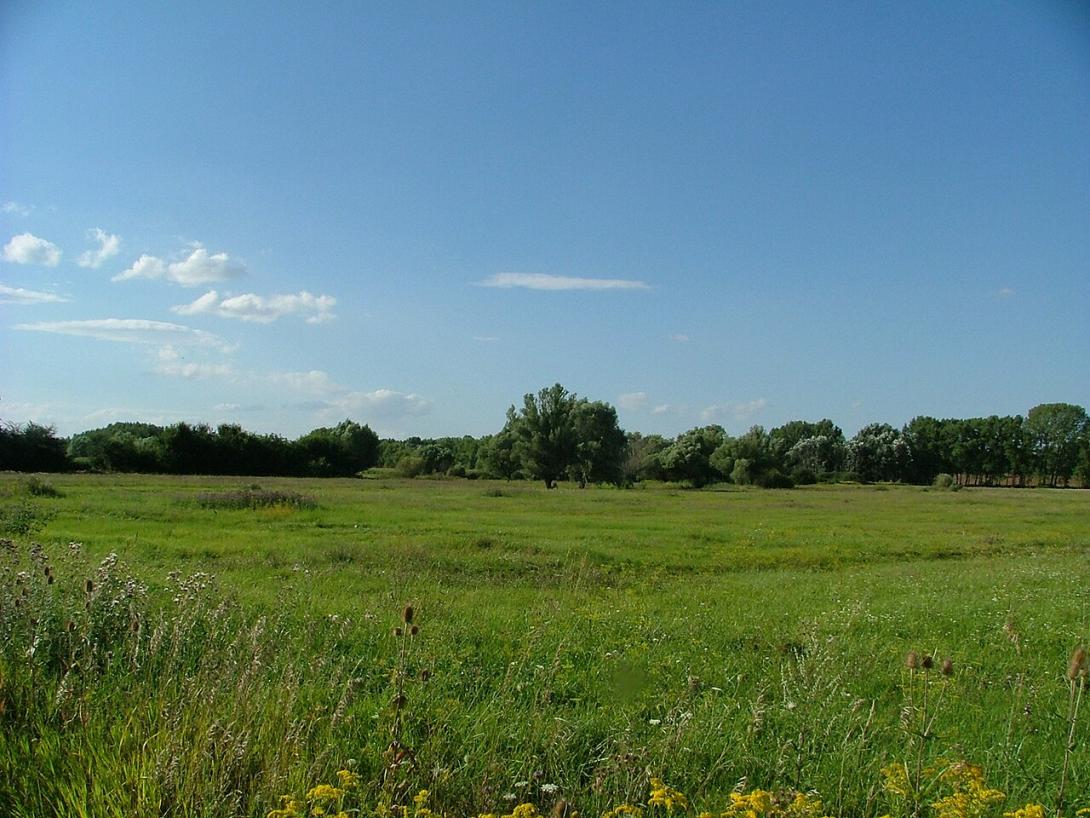Last update
2025
Summary
This project improves the conservation status of floodplain bird species protected in the Natura 2000 sites SPA Dunajské luhy (Slovakia) and SPA Szigetköz (Hungary). It is funded by the LIFE Programme. Since 2015, the follow-up LIFE Danube Floodplains (LIFE14 NAT/SK/001306) and partners have restored river connectivity and water regimes by reopening 18.5 km of tributaries, restoring >75 ha of wetlands and advancing earlier, better-timed simulated floods; water-regime improvement now covers ~1,805 ha. Recent actions in Slovakia include reopening 3.7 km of the lower Vojčianske side arm (2023–24), partial reconnection at Kráľovská lúka (2024) and re-excavation/reconnection of the Foki side arm in the Old Danube (~2.0 km; 2025). Monitoring reports note positive responses of rheophilic fish, amphibians and floodplain vegetation; hydromorphological works have restored extensive floodplain forest and riparian habitats (e.g., 482 ha of 91E0* and 115 ha of 91F0). In Hungary’s Szigetköz, the water-replenishment system was extended in 2014–15 and connectivity enhanced with fish passes at Dunasziget (1998), Ásványráró (2015) and at the Mosoni-Danube outlet in Vének (operational 2022).
Position
Latitude
48.0176
Longitude
17.3035
Project
NWRM
National Id
Slovakia_08
Installation date
2014-12
Implementation Status
Contact
REC
RBD code
SK40000
Transboundary
1
Photo gallery
Location of the project
On the Slovak side: in the Danube inland delta between Dobrohošť and Sap, with recent works near the villages of Vojka nad Dunajom, Kyselica and Dobrohošť. On the Hungarian side: in the Szigetköz floodplain (north of Győr) including reaches around Dunasziget–Ásványráró and up to the Mosoni-Danube mouth at Vének.
NUTS Code
SK01 - Bratislavský kraj
Project's objectives
Initial (LIFE07) project :
Restore selected wetlands, dried-up river branches and oxbows.
Restore river-branch connectivity, water regime and flowing-water conditions.
Lease/purchase land and introduce appropriate habitat management.
Eliminate fish-migration barriers at two strategic points.
Restore abandoned meadows (feeding/nesting habitat).
Plant native trees to restore refuges/nesting areas; prevent disturbance; gather scientific data; raise awareness.
Following (LIFE14) project :
Acquire/lease ~70 ha for restoration.
Create/reconstruct ≥5 technical structures; improve water regime over ~1,850 ha.
Restore ≥2 major river branches over ≥4,500 m and reconnect side arms.
Decrease human disturbance on 135 ha; restore 4 wetlands (37 ha).
Establish gene pool (3.8 ha) with 45,000 seedlings; plant 57,500 native trees on 45 ha.
Remove invasives on 40 ha; restore targeted habitats over ~745.5 ha; clean waste/ammunition on 5 ha; restore 84 ha of grasslands; ≥150 pollard willows restored and 200 planted; plus outreach targets.
Restore selected wetlands, dried-up river branches and oxbows.
Restore river-branch connectivity, water regime and flowing-water conditions.
Lease/purchase land and introduce appropriate habitat management.
Eliminate fish-migration barriers at two strategic points.
Restore abandoned meadows (feeding/nesting habitat).
Plant native trees to restore refuges/nesting areas; prevent disturbance; gather scientific data; raise awareness.
Following (LIFE14) project :
Acquire/lease ~70 ha for restoration.
Create/reconstruct ≥5 technical structures; improve water regime over ~1,850 ha.
Restore ≥2 major river branches over ≥4,500 m and reconnect side arms.
Decrease human disturbance on 135 ha; restore 4 wetlands (37 ha).
Establish gene pool (3.8 ha) with 45,000 seedlings; plant 57,500 native trees on 45 ha.
Remove invasives on 40 ha; restore targeted habitats over ~745.5 ha; clean waste/ammunition on 5 ha; restore 84 ha of grasslands; ≥150 pollard willows restored and 200 planted; plus outreach targets.
Involved Partners
| Authority type | Authority name | Role | Comments |
|---|---|---|---|
Climate zone
warm temperate moist
Temperature
10
Precipitation
600
Annual rainfall range
600 - 900 mm
Runoff coefficient
0,2
Elevation range
123
Vegetation class
Predominantly floodplain forest (alluvial/riparian forests—EU habitats 91E0* softwood and 91F0 hardwood), in a mosaic with reedbeds, marshes and low-lying wet meadows.
Water bodies: Ecological Status
Moderate
Water bodies: Chemical Status
Failing to achieve good
Water quality status
Main pressures : sedimentation in side arms, fish-migration barriers, intensive forestry and invasive plants, and loss of traditionally managed meadows.
Project scale
Meso
Project scale specification
This is a transboundary river-reach/floodplain project spanning multiple side-arms and wetlands of the Danube inland delta across two Natura 2000 SPAs (Dunajské luhy, SK, and Szigetköz, HU) — i.e., well beyond a single site but not nationwide. It targets the Dobrohošť–Sap branch system and adjacent areas on the Slovak side and the Szigetköz floodplain on the Hungarian side, restoring water regime and connectivity over large areas (e.g., water regime improved on ~1,850 ha; two major branches restored on ≥4.5 km expected; >75 ha of wetlands restored and 18.5 km of tributaries reopened reported).
Project area
2788
Area subject to Land use change or Management/Practice change (ha)
2014
Total cost
€4,577,663
Costs total information
LIFE07 NAT/SK/000707 – “Danube birds conservation” (2009–2015) Total eligible budget
Following project: LIFE14 NAT/SK/001306 – “Restoration and management of Danube floodplain habitats (LIFE Danube floodplains)” (2015–2024): Total eligible budget: €5,999,420.
Following project: LIFE14 NAT/SK/001306 – “Restoration and management of Danube floodplain habitats (LIFE Danube floodplains)” (2015–2024): Total eligible budget: €5,999,420.
Financing authorities
Type of funding
EU-funds: LIFE+
Comments
LIFE07 NAT/SK/000707 – “Danube birds conservation” (2009–2015)
€2,288,831
Not counted : LIFE14 NAT/SK/001306 – “Restoration and management of Danube floodplain habitats (LIFE Danube floodplains)” (2015–2024):
Total eligible budget: €5,999,420. EU contribution: €3,599,651 (60%).
€2,288,831
Not counted : LIFE14 NAT/SK/001306 – “Restoration and management of Danube floodplain habitats (LIFE Danube floodplains)” (2015–2024):
Total eligible budget: €5,999,420. EU contribution: €3,599,651 (60%).
Type of funding
National funds
Comments
BROZ, VVB, VÚVH, NLC, DINPD
Compensations
0
Policy context
In the past, the Danube inland delta represented one of the largest and most diverse natural wetland complexes in central Europe. Large parts of it have been destroyed over the past few decades. Habitat loss and destruction is continuing as a result of earlier river regulation and poor area management. The decreasing habitat quality and several other factors (e.g. unregulated human disturbance) have led to major decreases in the populations of the typical floodplain bird species (black stork, night heron, little egret, sand martin etc.). Urgent actions are needed to recover or maintain the quality and quantity of the floodplain avifauna.
Land ownership
Dunajské luhy : Mixed Ownership (349.22 ha leased; ~70 ha acquired by BROZ; surface watersare state-owned). Szigetköz : exclusively state-owned.
Community involvment
Yes
Design consultation activity
| Activity stage | Name | Key issues | Comments |
|---|---|---|---|
|
Information material
|
Raise awareness about target bird species, river restoration and nature conservation issues through the creation of information and promotional materials (book, calendars, leaflets, website, panels, etc) and through media coverage (local to international).
|
||
|
Regular meetings with stakeholders
|
Policy target
| Target purpose |
|---|
|
Improved Biodiversity
|
Policy pressure
| Pressure directive | Relevant pressure |
|---|
Policy impact
| Impact directive | Relevant impact |
|---|
Requirement directive
| Requirement directive | Specification |
|---|
Contractual arrangements
1
| Arrangement type | Responsibility | Role | Name | Comments |
|---|---|---|---|---|
|
Contractual agreement
|
BROZ
|
Land long term leasing
|
349.22 ha leased
|
Part of wider plan
0
Wider plan type
| Wider plan type | Wider plan focus | Name | Comments |
|---|
Continuous & multi-disciplinary (2016–2024 and continuing via LIFE Living Rivers), led by VÚVH/BROZ in Slovakia and by the joint Hungarian–Slovak Szigetköz monitoring (ÉDUVÍZIG and partners), covering hydrology, groundwater, physico-chemistry and biota.
Hydromorphology: continuous surface and groundwater levels (installed probes, public online stations), discharges, flow velocities, channel profiles, bed and suspended sediments; hydrodynamics during simulated floods are recorded (duration, peak flow). Hydrobiology: macrozoobenthos and macrophytes (pre/post), fish (pre-2023 vs post-2024), amphibians (2018–2024 with tailored spring/summer floods), snails, dragonflies, beetles, spiders, and pollinators. Physico-chemistry: temperature, conductivity, pH, dissolved O₂, total/organic N (incl. ammonia), total P, sulphate, chloride, CODMn, CODCr, TOC, nitrite/nitrate. The Szigetköz joint programme mirrors this with agreed physical, chemical and biological indicators plus morphology/sediment and hydrogeology modules.
Maintenance
Operations focus on annual simulated floods (two per year since 2021, with peaks up to 120 m³/s), operation/upkeep of weirs/sluices, and recurring habitat management (grazing/mowing, removal of invasive trees).
Outreach & awareness (SK/HU): Project communication reached >10 million people via TV, online, print and radio (monitored under action D.5).
Tourism, angling & agriculture (HU – Szigetköz): The water-replenishment programme reports positive socio-economic effects: better aquatic tourism opportunities, improved angling, and additional water for irrigation benefiting local farmers; it also supports drinking-water provision and enhances flood protection. (This is a parallel public works project in the same SPA, led by ÉDUVIZIG.)
Tourism, angling & agriculture (HU – Szigetköz): The water-replenishment programme reports positive socio-economic effects: better aquatic tourism opportunities, improved angling, and additional water for irrigation benefiting local farmers; it also supports drinking-water provision and enhances flood protection. (This is a parallel public works project in the same SPA, led by ÉDUVIZIG.)
Information on retained water
3 river branches restored/reopened over 9.57 km; 12 wetlands restored on 64.09 ha; 7 technical structures built/rehabilitated; water regime improved on 1,805 ha.
Flood pulse (simulated floods): experimental 120 m³/s for 4 days in 2023; 120 m³/s for 15 days in spring 2024, reported as crucial for refilling branches, wetland inundation and spawning/reproduction windows.
Flood pulse (simulated floods): experimental 120 m³/s for 4 days in 2023; 120 m³/s for 15 days in spring 2024, reported as crucial for refilling branches, wetland inundation and spawning/reproduction windows.
Information on Increased groundwater level
In Szigetköz, long-term monitoring shows +20–30 cm rise of spring/summer groundwater (recovering >⅓ of the post-diversion drop); however winter levels declined in upper areas over recent decades (an unexpected/negative trend needing further study).
Water quality overall improvements
N/A info
Soil quality overall soil improvements
Not relevant for this application
1
Fish: post-works monitoring (2023–2024) reports positive responses of rheophilic species after barrier removal and flow acceleration in restored branches.
Amphibians: simulated spring/summer floods and wetland refilling led to high breeding activity/abundance at monitored sites.
Habitats restored (examples): floodplain forests and riparian types exceeded targets (e.g., 91E0* ≈ 482 ha, 91F0 ≈ 115 ha).
Amphibians: simulated spring/summer floods and wetland refilling led to high breeding activity/abundance at monitored sites.
Habitats restored (examples): floodplain forests and riparian types exceeded targets (e.g., 91E0* ≈ 482 ha, 91F0 ≈ 115 ha).
Ecosystem impact climate regulation
Not relevant for the specific application
Key lessons
Restoring the water courses is the best way to help all the ecosystems surround it and all the species attached to them.
Early land tenure work is decisive. The project explicitly calls land purchase/long-term leases a “crucial” precondition, and pairing in-house experience with legal experts proved essential; by the end it had secured 67.07 ha purchased and 349.22 ha leased for durable management.
Hydrology must be managed as an integrated package. Physical works on side-arms went hand-in-hand with active operation (simulated floods); involving the project team in flood-planning improved outcomes, with peak discharges reaching 120 m³/s in 2023–2024.
Timing matters for biota. Shifting to earlier spring controlled floods (from 2021 onward) increased suitability for amphibian reproduction; negotiating spring and summer releases each year became part of adaptive management.
Structured conflict resolution is a lever. A consortium of agencies, water managers, NGOs and users agreed a new water regime and an updated operational manual that aligns releases with Natura 2000 needs—unlocking restoration at scale.
Plan for longer monitoring horizons. The final evaluation notes that many ecosystem-function effects could not yet be measured in the field; medium-term monitoring is recommended, as several processes manifest over years to decades.
Early land tenure work is decisive. The project explicitly calls land purchase/long-term leases a “crucial” precondition, and pairing in-house experience with legal experts proved essential; by the end it had secured 67.07 ha purchased and 349.22 ha leased for durable management.
Hydrology must be managed as an integrated package. Physical works on side-arms went hand-in-hand with active operation (simulated floods); involving the project team in flood-planning improved outcomes, with peak discharges reaching 120 m³/s in 2023–2024.
Timing matters for biota. Shifting to earlier spring controlled floods (from 2021 onward) increased suitability for amphibian reproduction; negotiating spring and summer releases each year became part of adaptive management.
Structured conflict resolution is a lever. A consortium of agencies, water managers, NGOs and users agreed a new water regime and an updated operational manual that aligns releases with Natura 2000 needs—unlocking restoration at scale.
Plan for longer monitoring horizons. The final evaluation notes that many ecosystem-function effects could not yet be measured in the field; medium-term monitoring is recommended, as several processes manifest over years to decades.
Success factor(s)
| Success factor type | Success factor role | Comments | Order |
|---|---|---|---|
|
Existing staff and consultant knowledge
|
main factor
|
1
|
|
|
Financing possibilities
|
secondary factor
|
2
|
Driver
| Driver type | Driver role | Comments | Order |
|---|---|---|---|
|
Organisation committed to it
|
main driver
|
1
|
|
|
Availability of subsidies
|
secondary driver
|
2
|
Transferability
Transferable to regulated lowland rivers with side-arm networks: reconnect branches and run managed (simulated) floods. Success hinges on early land tenure, updated operational rules with the operator, solid modelling/monitoring, and an After-LIFE maintenance plan. Watch permitting/procurement timelines and the securing of annual releases.
English
